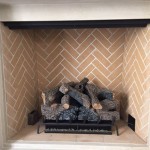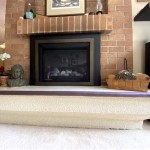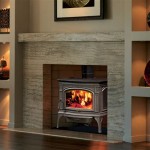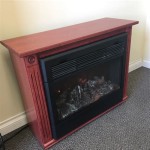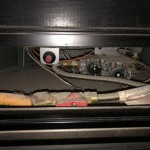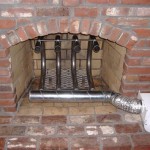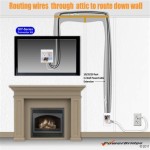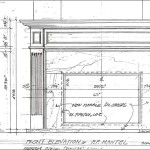Freestanding Ventless Fireplaces: A Comprehensive Guide
Freestanding ventless fireplaces, also known as vent-free fireplaces, have become increasingly popular in recent years. They offer a cozy and inviting ambiance without the need for a traditional chimney or vent. These innovative fireplaces offer a range of benefits, making them an attractive option for homeowners seeking to enhance their living spaces. This article provides an in-depth look into freestanding ventless fireplaces, covering their key features, advantages, disadvantages, and considerations for choosing the right one for your home.
Understanding Ventless Fireplace Technology
Ventless fireplaces operate on a different principle compared to traditional vented fireplaces. Instead of expelling combustion byproducts through a chimney, ventless fireplaces utilize a sealed combustion system. They draw in air from the room, burn fuel efficiently, and release heat directly into the space. The exhaust gases, which include water vapor, carbon dioxide, and nitrogen, are filtered and released back into the room. This process ensures minimal emissions and maximizes heat output.
However, it's crucial to understand that ventless fireplaces do require proper ventilation to function safely. They typically come equipped with oxygen depletion sensors that automatically shut off the fireplace if oxygen levels fall below a safe threshold. Additionally, ventless fireplaces are designed to ensure that exhaust gases are kept below safe levels, but proper ventilation is still essential for maintaining good indoor air quality.
Advantages of Freestanding Ventless Fireplaces
Freestanding ventless fireplaces offer several advantages that make them an attractive alternative to traditional fireplaces.
Easy Installation and Placement
One of the key benefits of ventless fireplaces is their ease of installation. Unlike traditional fireplaces, they do not require extensive construction or chimney work. They are designed to be freestanding, allowing for flexible placement in various locations within a room. Their portability makes them ideal for both new and existing homes, particularly those with limited space or structural limitations.
Efficient Heat Output
Ventless fireplaces are highly efficient in converting fuel into heat. They generate a significant amount of heat that can effectively warm a room or even an entire living area. Their efficient design minimizes heat loss, maximizing energy utilization and reducing fuel consumption.
Variety of Styles and Designs
Ventless fireplaces come in a wide range of styles and designs to suit different tastes and décor preferences. From sleek contemporary models to rustic traditional designs, there is a ventless fireplace to complement almost any home aesthetic. They offer a variety of fuel options, including gas, ethanol, and gel, providing further flexibility in choosing the right model for your specific needs.
Disadvantages of Freestanding Ventless Fireplaces
While ventless fireplaces offer numerous advantages, they also have some disadvantages that should be considered before making a purchase.
Air Quality Concerns
Ventless fireplaces release combustion byproducts, including carbon dioxide, water vapor, and nitrogen, back into the room. While these emissions are generally considered safe within normal operating conditions, proper ventilation is crucial for maintaining good indoor air quality. It's essential to ensure adequate ventilation and monitor air quality levels, especially in smaller rooms or spaces with limited air circulation.
Limited Heating Capacity
Ventless fireplaces are designed to heat a specific area and may not provide sufficient heat for larger rooms or entire houses. Their heating capacity is typically limited to a single room or zone, making them more suitable for supplementing central heating systems rather than serving as the primary source of heat.
Potential for Odor
Some ventless fireplaces may produce a slight odor during operation, especially when initially lit. It's crucial to choose a model with a high-quality combustion system and proper ventilation to minimize any potential odors. Regularly cleaning the fireplace and fuel source can also help reduce odor.
Considerations for Choosing a Freestanding Ventless Fireplace
Before purchasing a freestanding ventless fireplace, it's crucial to consider several factors to ensure you choose the right model for your needs.
Room Size and Ventilation
The size of the room and its ventilation system play a crucial role in determining the appropriate heating capacity and suitability of a ventless fireplace. It's essential to choose a model that is adequately sized for the space and has proper ventilation for safe operation.
Fuel Type
Ventless fireplaces are available with different fuel types, including gas, ethanol, and gel. Each fuel type has its own advantages and disadvantages in terms of cost, convenience, and environmental impact. Consider the fuel type that best suits your preferences and lifestyle.
Style and Design
Ventless fireplaces come in a range of styles and designs to match different home décor aesthetics. Choose a model that complements your existing furniture and furnishings to create a cohesive and visually appealing look.
Safety Features
Safety is paramount when considering any fireplace. Ventless fireplaces should be equipped with essential safety features, including oxygen depletion sensors, tilt switches, and automatic shut-off mechanisms. Ensure the model you choose meets local building codes and safety standards.
Freestanding ventless fireplaces offer a unique and convenient way to enjoy the warmth and ambiance of a fire without the need for a traditional chimney. By carefully considering the advantages and disadvantages, choosing the right model, and following safety guidelines, you can create a cozy and inviting atmosphere in your home.

50 Free Standing Ventless Gas Fireplace Visualhunt

50 Free Standing Ventless Gas Fireplace Visualhunt

Radiance Vent Free Gas Stove The Place

Ventless Gas Fireplace Vent Free Modern

How To Install A Free Standing Gas Fireplace Modern Stove Ventless Propane

50 Free Standing Ventless Gas Fireplace Visualhunt

50 Free Standing Ventless Gas Fireplace Visualhunt

Free Standing Gas Stoves Hearth And Home Pe

Ignis White See Through Ethanol Fireplace Tectum

Ventless Gas Fireplace Propane
Related Posts

